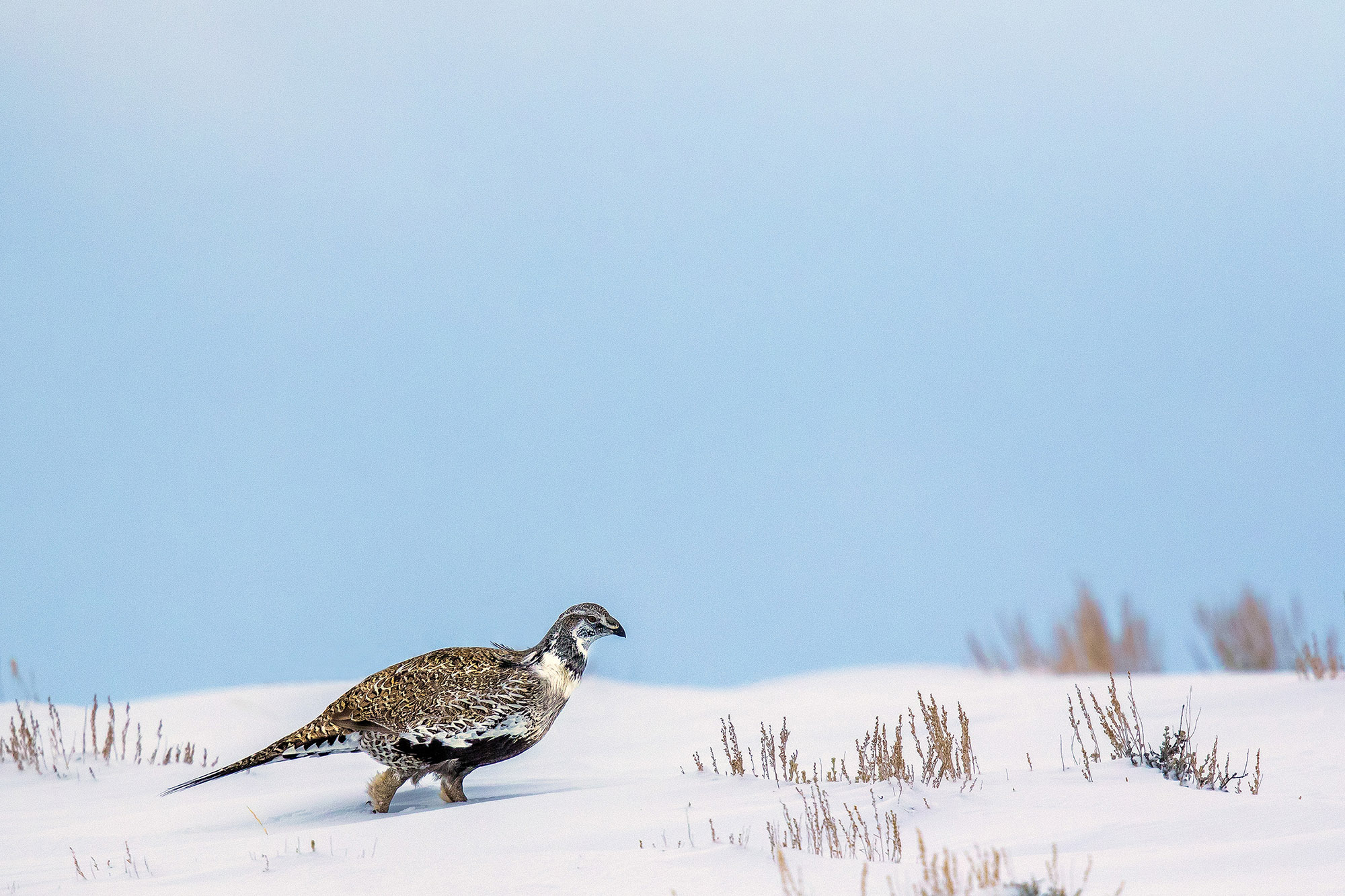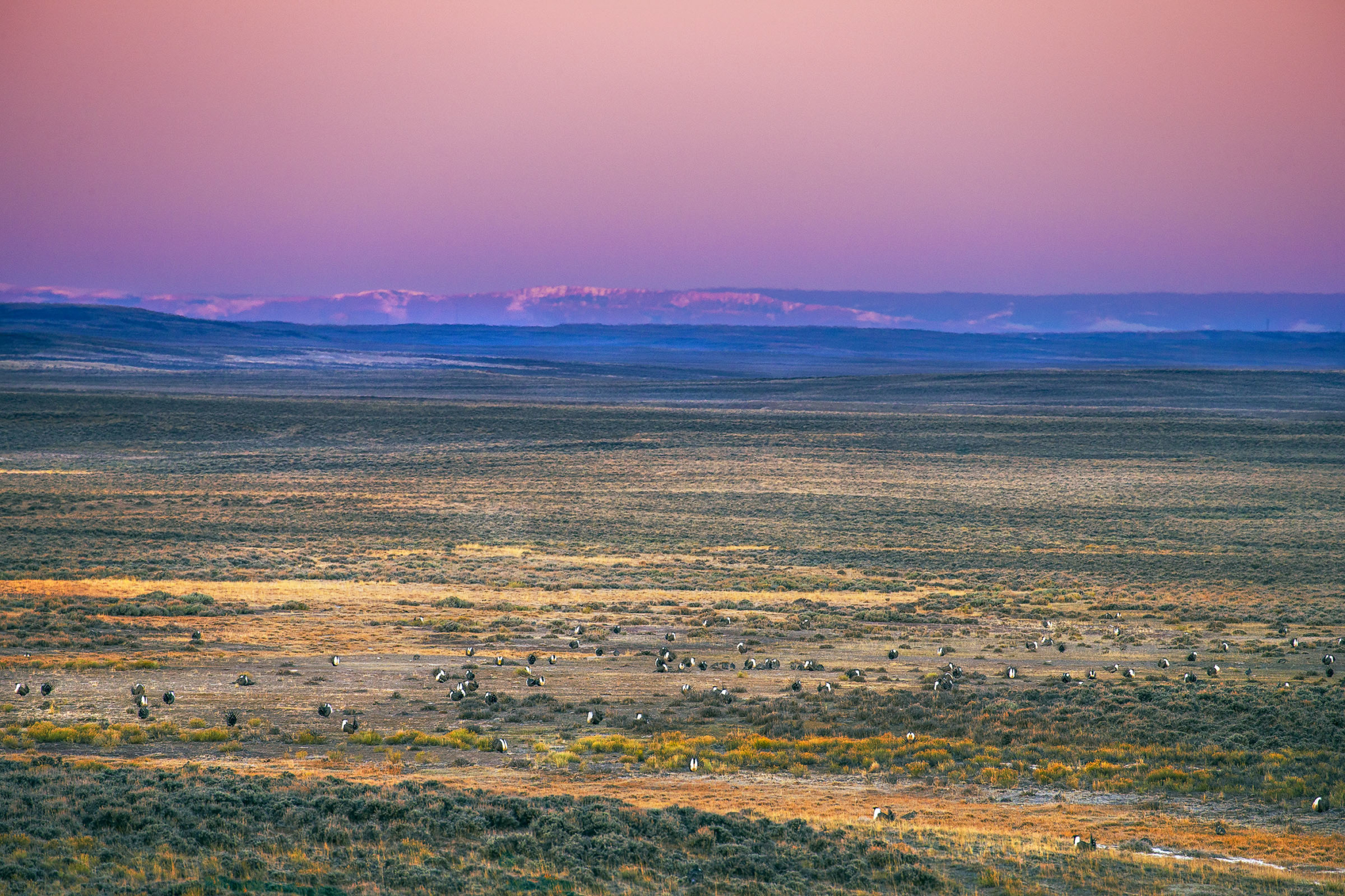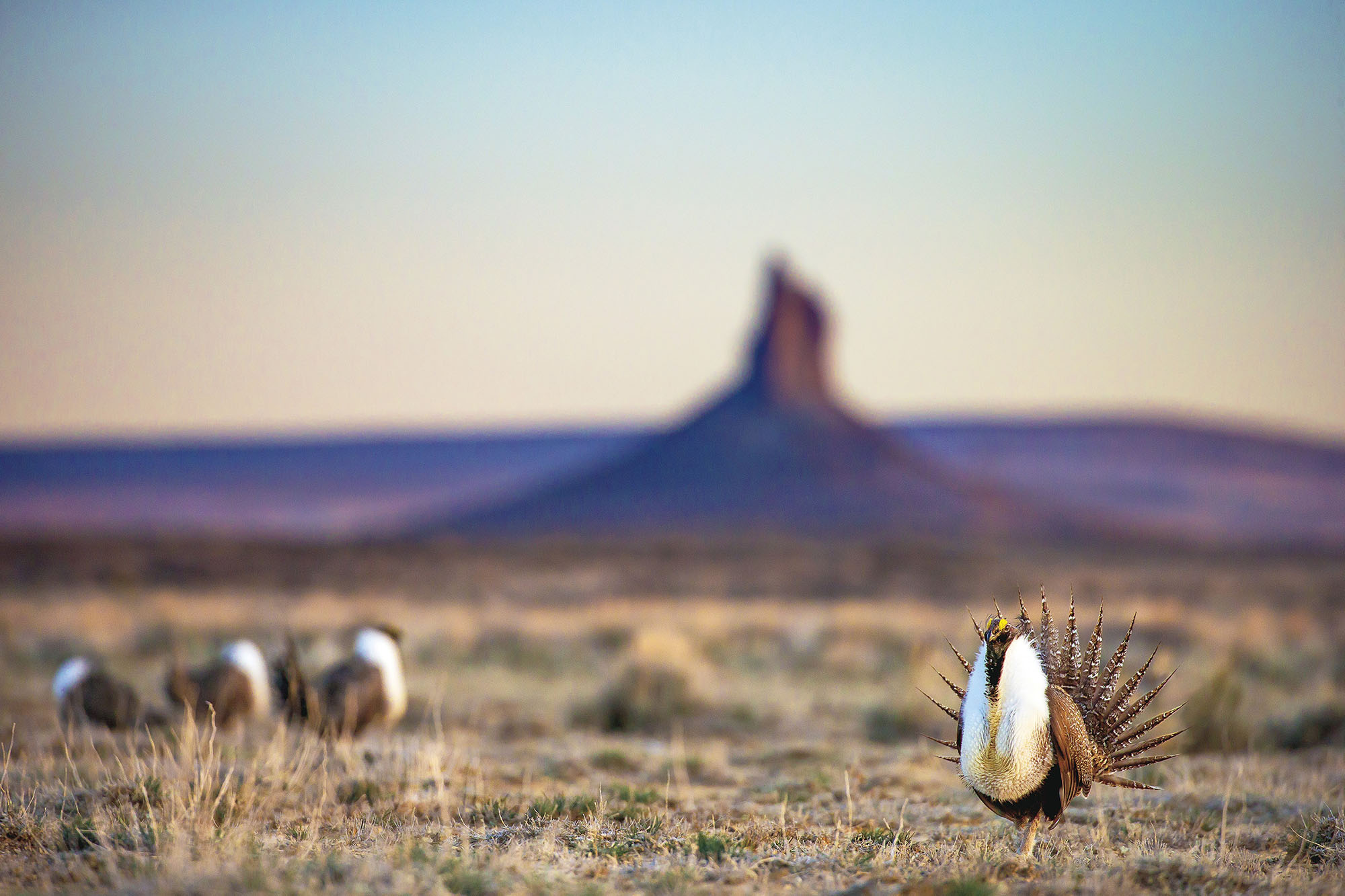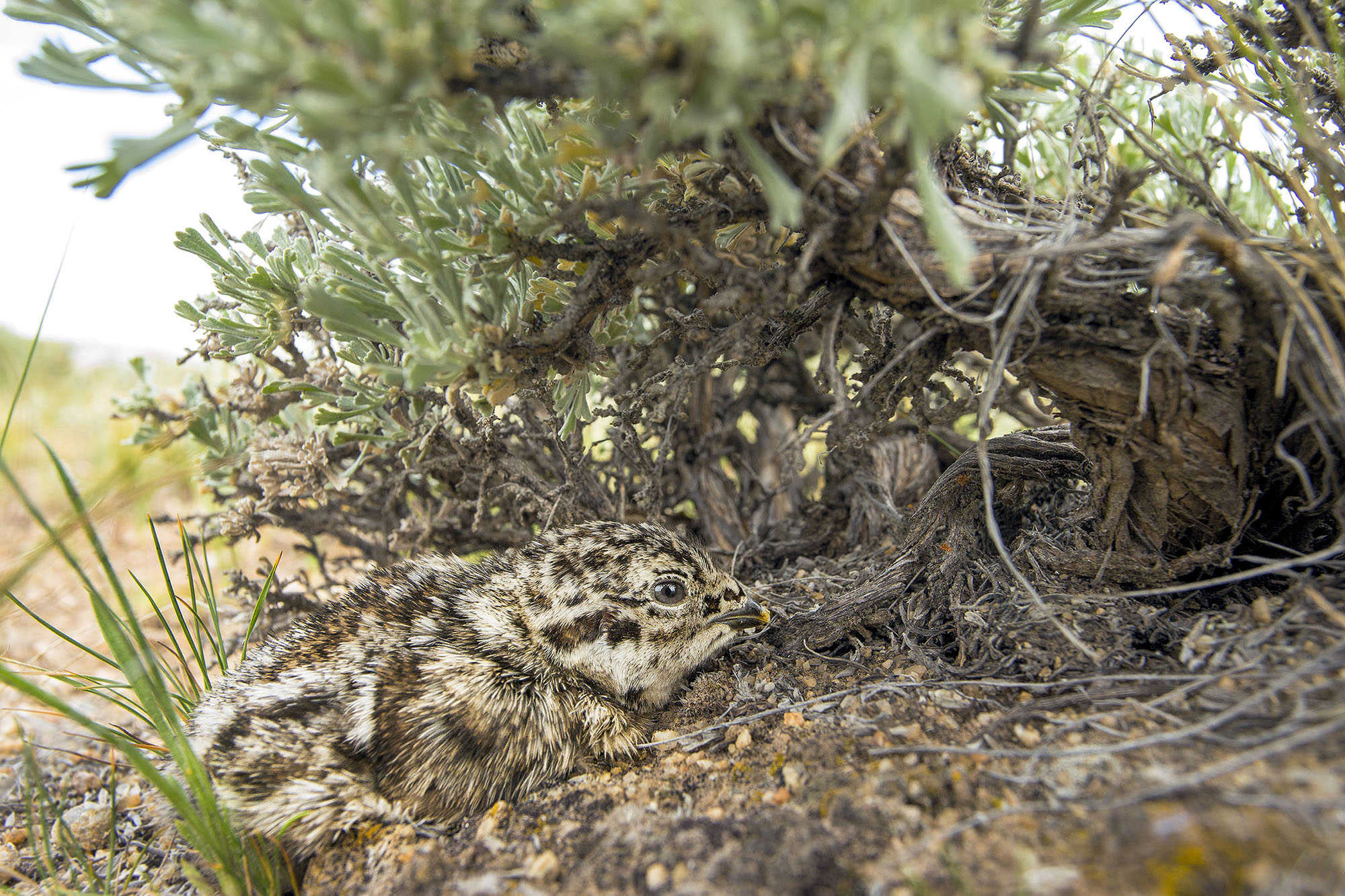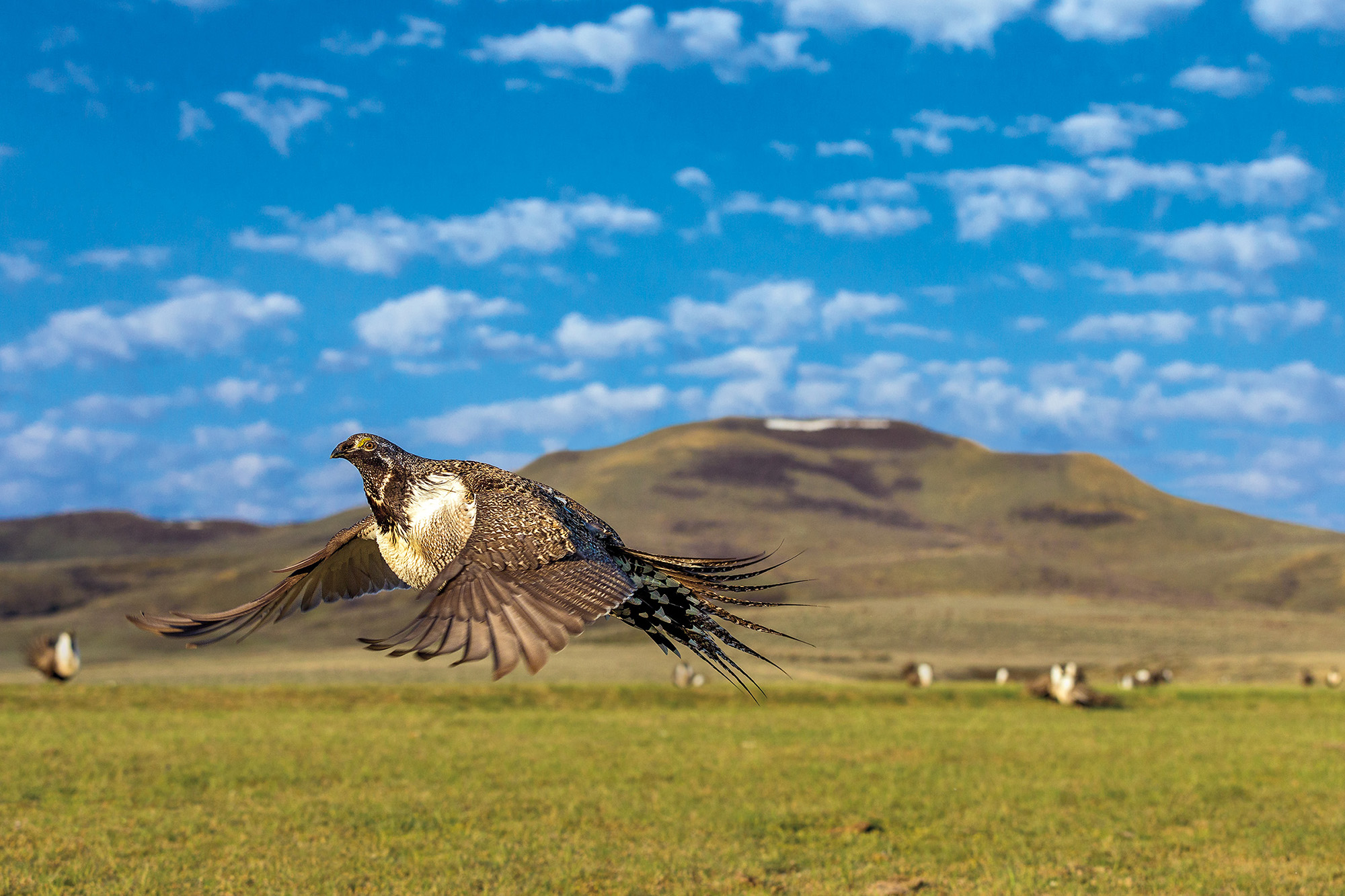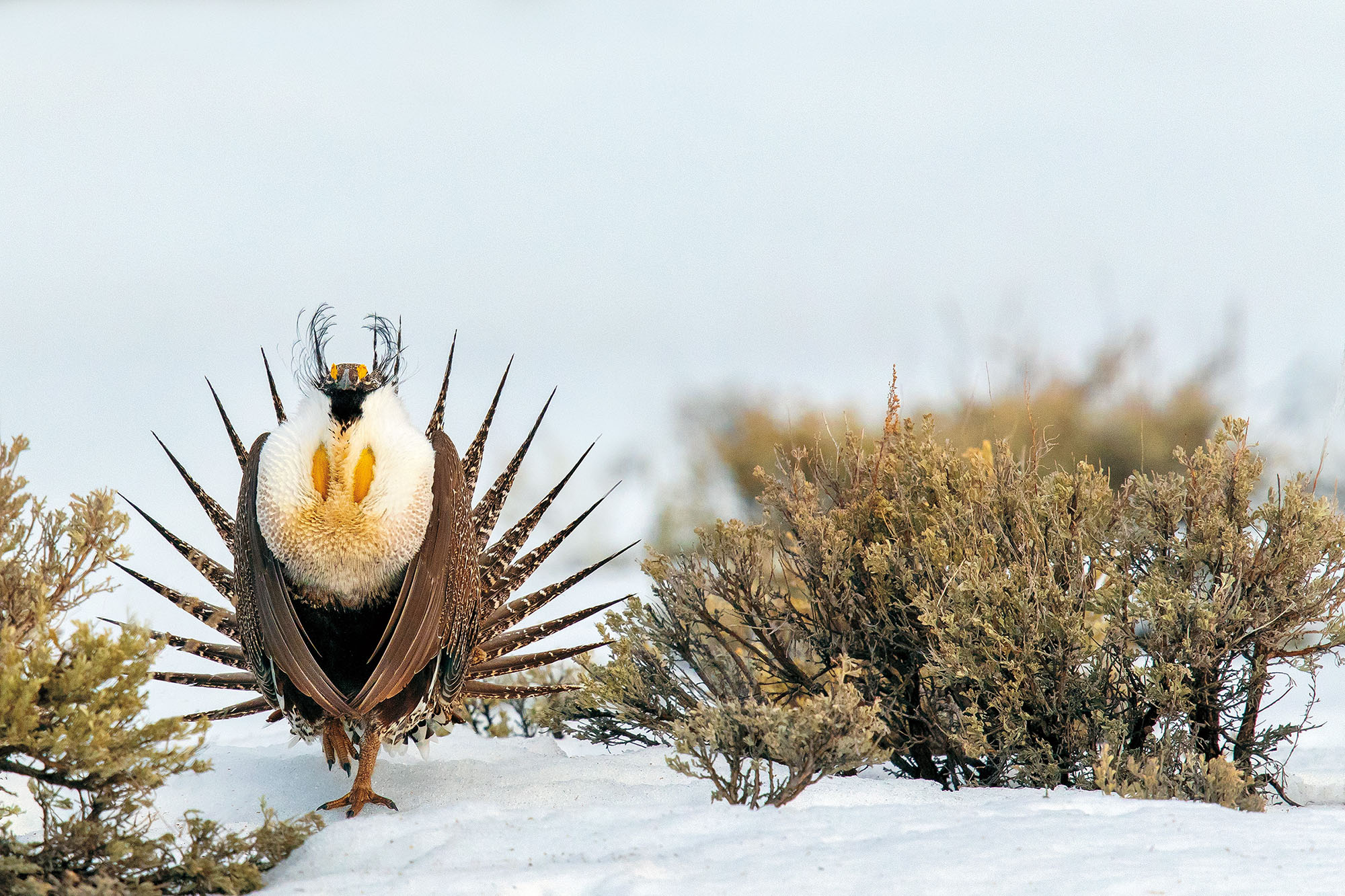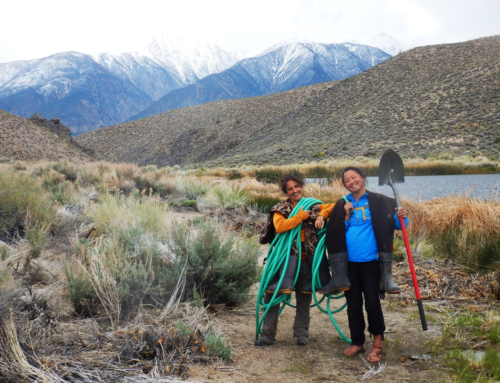In his first presentation in the state of California last month, Noppadol Paothong blew the audience away with his stunning photography of greater sage-grouse.
But the positive impact of Noppadol’s work reaches beyond the sheer beauty of his photographs. As he documents just how compelling the sage-grouse is, he is also spreading the word about why this species is so important.
Why are they important? For one, Noppadol explains, the greater sage-grouse is incredibly unique. In his new book, he describes what it is like to witness the male sage-grouse’s spectacular courtship dance. “They will strut, flap their wings against the white pouches and utter a distinctive series of gentle bubbling sounds.” He explains that sage-grouse travel from near and far every year to return to the same exact spot for this ritual.
And they are a key indicator species, meaning that if sage-grouse are thriving then there is a higher likelihood that many other species of plants and animals are also thriving. But these unique birds are at risk. They depend heavily on their healthy sagebrush homes, so we need to protect these native plants in order to keep sage-grouse population steady.
ESLT’s work is a force for doing that. Noppadol notes that habitat fragmentation is the number one cause of bird decline; this is true also for the unique subspecies of sage-grouse that lives in the Eastern Sierra, the Bi-State sage-grouse. Thanks to our conservation partners, our hardworking volunteers, and our members and supporters, we’ve protected a lot of critical Bi-State sage-grouse habitat on working ranches and other private land. The land we protect will always be there for the birds it can never be developed or subdivided.
Other threats to the Bi-State sage-grouse include invasive plants and barbed wire fences. That’s why we’re always working with our volunteers and conservation partners to remove those invasive plants and to convert necessary fences into bird-friendly fences.
By supporting ESLT, you help this awesome species survive.
The U.S. Fish and Wildlife Service (USFWS) will announce their final determination of whether to list the Bi-State sage-grouse as threatened under the Endangered Species Act by April 1 st , 2020. ESLT is monitoring news and updates about this decision. Once the decision has been made, we will look carefully at what it means for our community, partners, and landowners.
Learn more about how ESLT protects critical wildlife habitat.
And, read more about Noppadol Paothong and his new book Sage Grouse, Icon of the West on his website.



